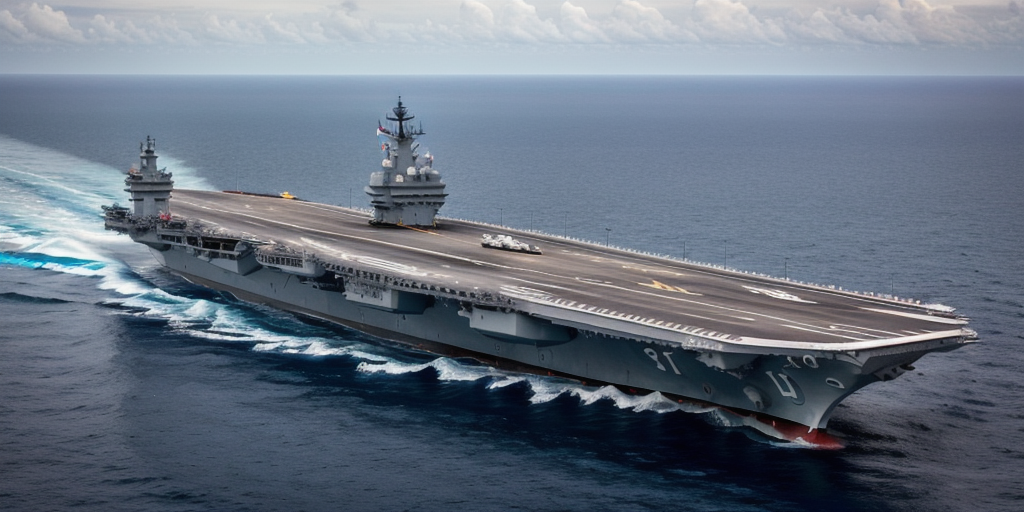
Chinese Aircraft Carrier Seen Operating Deeper Into Pacific
How did your country report this? Share your view in the comments.
Diverging Reports Breakdown
China grows naval reach as carrier pushes to Western Pacific frontier
China has sent its aircraft carrier Liaoning further into the Western Pacific than ever before. As of May 30, the Liaoning was operating east of the Philippines and west of Guam.
Tracking data from Japan’s Ministry of Defense and the US Naval Institute (USNI) shows that as of May 30, the Liaoning was operating east of the Philippines and west of Guam.
This marks a significant expansion of its operational area.
Map Tracks Chinese Aircraft Carrier Near US Allies
China has the world’s largest navy by hull count, with more than 370 vessels. Beijing has been expanding its military reach and presence beyond the First Island Chain. Two U.S. aircraft carriers—USS Nimitz and USS George Washington—operate simultaneously in the South China Sea and the Philippine Sea. Japan deployed its navy to monitor and gather intelligence on the Chinese naval task group, while Japanese fighter jets were scrambled in response to the Liaoning’s flight operations. China has been intensifying its activities across the entire region surrounding Japan, particularly in the area around the Senkaku Islands, the Sea of Japan, and the western Pacific Ocean, extending beyond the so-called first island chain to the second island chain. The Liaoning has been tracked underway since late May, operating in the East China Sea. It was later captured in satellite imagery while sailing near the Philippines. It remains to be seen whether the Chinese aircraft carrier will sail toward the Second Island Chain, a hub at the center of the Pacific and Second Islands chain.
Newsweek AI is in beta. Translations may contain inaccuracies—please refer to the original content.
A Newsweek map shows that the Chinese aircraft carrier CNS Liaoning continues to operate in the western Pacific Ocean during its deployment near Japan, Taiwan and the Philippines.
The Liaoning was conducting routine training not aimed at any specific country, said Senior Colonel Zhang Xiaogang, spokesperson for the Chinese Defense Ministry, on May 29.
Newsweek has reached out to the Chinese Defense Ministry for further comment by email.
Why It Matters
China has the world’s largest navy by hull count, with more than 370 vessels—including two aircraft carriers in service. Beijing has been expanding its military reach and presence beyond the First Island Chain, a U.S. containment strategy formed by Japan, Taiwan and the Philippines.
The Liaoning has been tracked underway since late May, operating in the East China Sea and transiting the Miyako Strait—a key waterway in the First Island Chain—toward the Philippine Sea. It was later captured in satellite imagery while sailing near the Philippines.
The deployment of the Liaoning comes as two U.S. aircraft carriers—USS Nimitz and USS George Washington—operate simultaneously in the South China Sea and the Philippine Sea, respectively, maintaining a U.S. naval presence and projecting power across both seas.
What To Know
The Joint Staff of the Japanese Defense Ministry issued an update on Monday, revealing that as of May 30, the Chinese aircraft carrier and at least three other vessels were tracked in waters east of the Philippines, continuing their southward transit through the Philippine Sea.
The accompanying Chinese vessels were identified by their hull numbers as the destroyers CNS Qiqihar and CNS Tangshan, as well as the supply ship CNS Hulunhu.
One of the photos released by the Japan Joint Staff shows the Liaoning and the Hulunhu conducting underway replenishment at an undisclosed location in the western Pacific Ocean.
With regard to the Liaoning’s flight operations with fighter jets and helicopters, the Japan Joint Staff reported that between May 25 and 29, the Chinese aircraft carrier conducted a total of 260 takeoffs and landings while operating near Japan, Taiwan and the Philippines.
Japan deployed its navy to monitor and gather intelligence on the Chinese naval task group, while Japanese fighter jets were scrambled in response to the Liaoning’s flight operations.
The U.S. Naval Institute News reported that the Chinese aircraft carrier’s latest position “marks one of the furthest recorded points it has sailed to on its deployments from China.”
Of the American aircraft carriers operating in the western Pacific Ocean, officially released photos show the Nimitz continuing its scheduled South China Sea deployment as of May 30.
Meanwhile, the George Washington is scheduled to arrive at its home port at Yokosuka naval base in Japan on Wednesday morning, local time, the Japanese Foreign Ministry said.
The Chinese aircraft carrier CNS Liaoning sails into Hong Kong on July 7, 2017. The Chinese aircraft carrier CNS Liaoning sails into Hong Kong on July 7, 2017. Hong Kong Government Information Service via AP
What People Are Saying
Mao Ning, spokesperson for the Chinese Foreign Ministry, said on May 28: “What I can tell you is that China’s military vessels’ activities in relevant waters are fully consistent with international law and international practice. We hope Japan will view this from an objective and reasonable perspective.”
Japan’s defense white paper 2024 said: “China has been intensifying its activities across the entire region surrounding Japan, including in the East China Sea, particularly in the area around the Senkaku Islands, the Sea of Japan, and the western Pacific Ocean, extending beyond the so-called first island chain to the second island chain.”
The Senkaku Islands are an islet group in the East China Sea, ruled by Japan but claimed by China as the Diaoyu Islands. The Sea of Japan is also known as the East Sea in South Korea.
What Happens Next
It remains to be seen whether the Liaoning will sail east toward Guam—the westernmost U.S. territory in the Pacific and a strategic hub at the center of the Second Island Chain.
